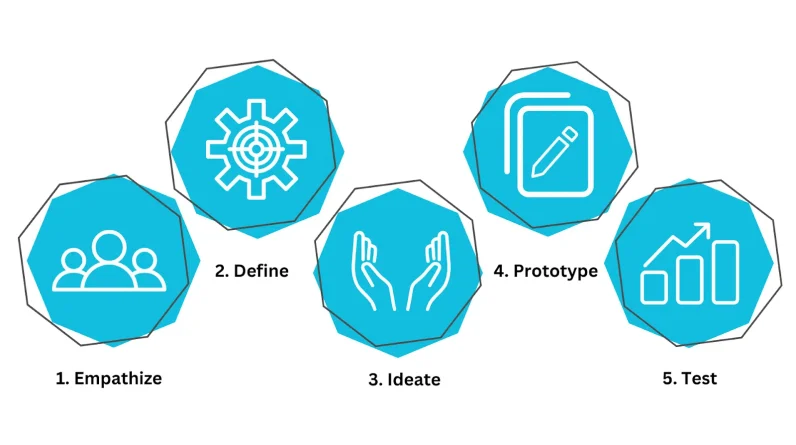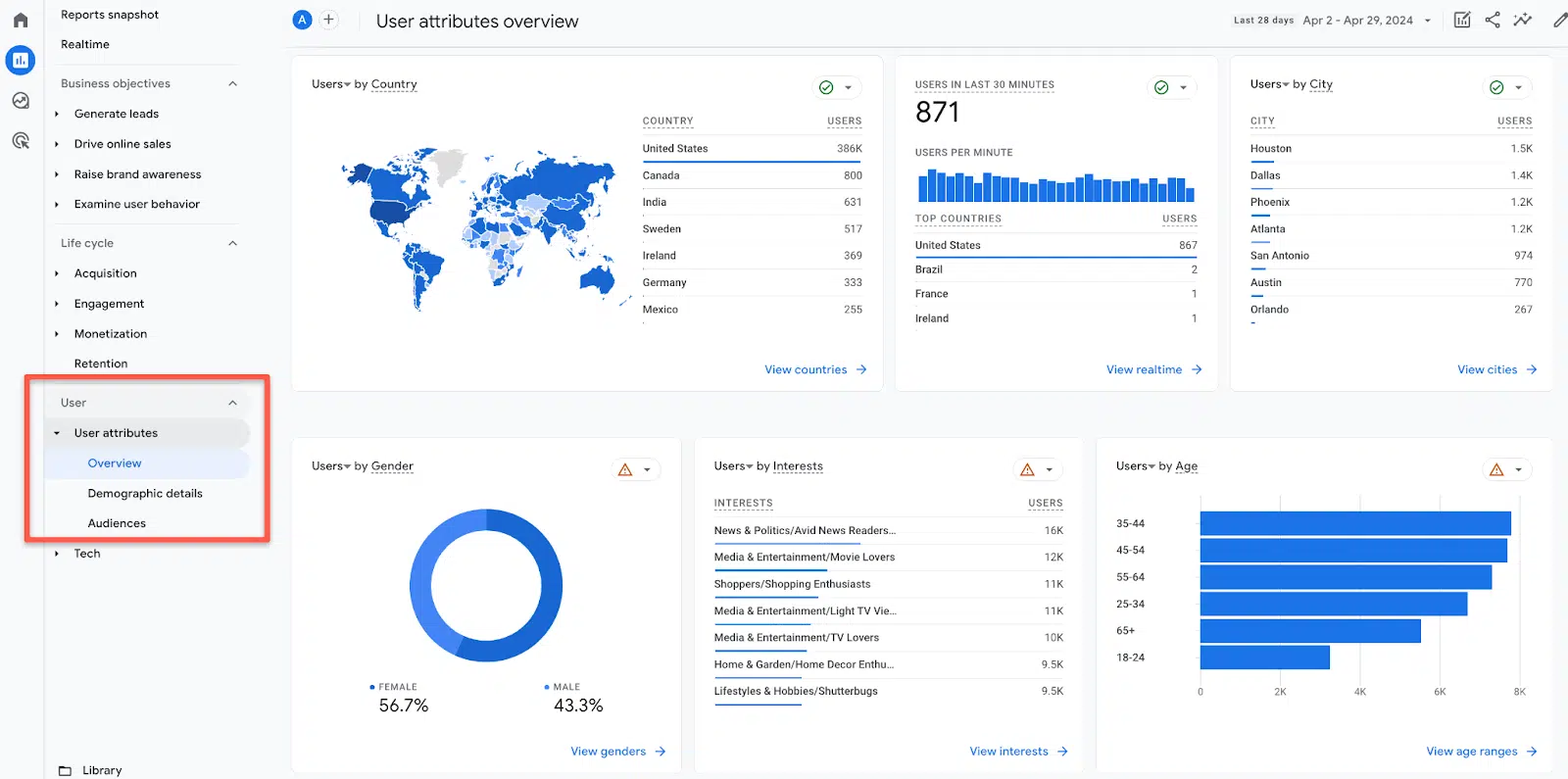
One of the things I love about SEO is its inherent duality.
We can use both sides of our brain:
The right brain when it comes to on-page, content and even link building campaigns. Left brain when it comes to techniques, data analysis, etc.
However, it’s easy to think that SEO is predominantly left-brained. SEO tactics often rely heavily on data and numerical figures. We rely on technical knowledge and keyword optimization. Logically, we react to what the numbers tell us and decide our next steps accordingly. It’s a proven approach.
But what about the people driving that data? What about your intention? Can we use more creative thinking to find better optimization strategies?
When it comes to SEO, our goal isn’t really to get the coveted top blue link. It’s about reaching the right people and meeting their needs by giving them what they want as quickly and easily as possible.
So how do we achieve this goal?
Users are always looking to do something, whether it’s finding information, being entertained, or buying a product. How do we leverage emotional and behavioral data to support them?
This is where design thinking comes in.
What is design thinking?
Design thinking is exactly what it sounds like: adopting a designer mindset.
It’s a human-centered framework for solving problems the way a designer would, setting out to solve a problem using creativity instead of data.
The design thinking process is usually divided into five stages:
Empathize Define Ideate Prototype Test and evaluate
With design thinking, the emphasis is not only on the solution, but also on the end user.
SEO specifically focuses on providing the best solution for a specific audience. It’s about understanding user intent and adding value.
Get the daily search newsletter marketers trust.
A new optimization process
1. Empathize: Know your audience
Empathizing in this context focuses on identifying and understanding your audience.
The best SEO strategy optimizes for consumer discovery by understanding the people who search. This ensures that you are adding value to users and ultimately growing your audience through increased organic visibility.
Conduct thorough research to understand your existing audience and learn about their search behaviors, motivations, and pain points.
There are several tools available to help you research your target audience. Using Google Analytics to understand who is coming to your site is a good place to start.
In GA4, you can view audience reports under User > User Attributes to identify location, gender, age, language, and even interests when available.

You can also leverage Google Trends, Facebook Audience Manager, and persona mapping or survey tools to learn more about your potential audience.
Collecting this information helps personalize efforts, from keyword selection to content creation and off-page efforts. When your SEO strategy is anchored in reaching an audience you fully understand, you can reach them more efficiently.
Dig Deeper: An SEO Guide to Audience Research and Content Analysis
2. Define: What problem are we trying to solve
The next step is to analyze your audience data to define the SEO challenges you want to address. This is critical to ensure you’re addressing the real wants and needs of your audience through your SEO efforts rather than working from assumptions like search volume or clicks.
Based on the unique audiences you’ve identified, you can better determine the specific challenges you need to address and how to reach users. Consider:
What messages and terminology are most likely to resonate with your target audience? Are users having trouble finding relevant information on your website? Are there gaps in your content that need to be filled? Based on location, what search engines are audiences using beyond Google? Yandex, Baidu, DuckDuckGo? By age and gender, which non-traditional search engines should you consider? TikTok, YouTube, Amazon, Pinterest?
Clearly defining the problem allows you to focus your efforts on the areas that will most impact your SEO performance.
3. Ideate: How can we better solve this problem?
With a clear understanding of the SEO challenge, brainstorm as many potential solutions as possible. It’s easy to fall into the same pattern of optimizing your site based on analytics data and search trends, but with design thinking, we emphasize qualitative data over quantitative data.
Some different brainstorming techniques to help transcend your left-brain thinking habits include:
brain writing: All group members write down three ideas related to the challenge. From there, everyone passes their ideas to the person next to them to elaborate on the principles of thought and add strategies or tactics. This process is repeated until the ideas have passed through the whole group. Ultimately, everyone contributed to every idea.
Starbursting: Given a specific idea or strategy, create a six-pointed star around the idea, posing the questions who, what, when, where, why, and how. Focusing on these key elements for each idea encourages the team to think about value and execution.
Think outside the box and consider how to create value for your audience through content, website updates or user experience. In this exercise, quantity is key: use cross-functional thinking to generate broad and diverse ideas.
Is content expansion something that could help meet your challenge? Need additional content that addresses a problem? Need to improve how easily users find your existing content? Should social media be considered to increase visibility and extend reach? Are there PR tactics that can help generate earned coverage (ie, inbound links and brand mentions)? Could other media, such as videos, webinars, or podcasts, help solve the need?
Perhaps traditional SEO tactics will help you solve your particular challenge. But often, by integrating multi-channel tactics, you can better address SEO challenges and add value for users.
Dig Deeper: SEO Planning – Your One Page SEO Plan
4. Prototype: Build the thing
Before implementing any SEO strategy or tactic at scale, create “prototypes” to visualize and test your ideas.
Visualization is crucial to understanding how a strategy can address the problem or challenge. However, your prototype doesn’t have to be a high-fidelity visual asset.
This could involve:
Updating keyword maps and topic clusters. Writing content samples. Creation of models of new features. Development of wireframes for website updates.
In many cases, fancy tools and a team of engineers are not required. You can use low-fidelity tools like Figma or Google Sheets to create basic prototypes that clearly convey the solution.

Whatever form a prototype takes, it’s essential to consider the unique problem or challenge and relate it to the audience.
When considering the effectiveness of your prototype, use role play to put yourself in the shoes of your target audience.
Dig Deeper: Passing Keyword Information to Non-SEOs: A Visual Approach
5. Test and evaluate: Does this solution work?
Design thinking makes a lot of sense for SEO because, like SEO, it’s an iterative process.
The final step is to collect feedback on “prototypes” and/or tactics to refine solutions and strategies.
Intentionally test your tactics and continuously monitor performance. Leverage a modern framework for running SEO tests. Embrace a culture of experimentation to evolve your approach and better understand pain points.
A/B test everything from metadata to messaging and content structure. Leverage heatmaps to better understand how your target audience uses your website. Test your keywords and messages with Google Ads. Consider testing usability using a tool like Hotjar or UserTesting. Actively seek feedback on your site’s design, layout, and functionality through surveys.
Changes in user behavior can be measured more directly and immediately than traditional SEO KPIs.
By testing with real users, you can collect feedback early in the process and make necessary adjustments along the way.
Creative problem solving for SEO
Remember, it all starts with redefining the problems we’re trying to solve.
Reframing SEO challenges around the needs and challenges of our target audience allows us to better give people what they want.
When your SEO efforts are focused on the right audience, it’s easier to reach them. Traffic increases, which leads to more conversions.
Use design thinking to balance the analytical and creative aspects of SEO. It can help you better understand when to use data, ignore trends and take risks, ultimately allowing you to create more impactful and user-centric SEO campaigns.
The opinions expressed in this article are those of the guest author and not necessarily Search Engine Land. Staff authors are listed here.
[ad_2]
Source link




